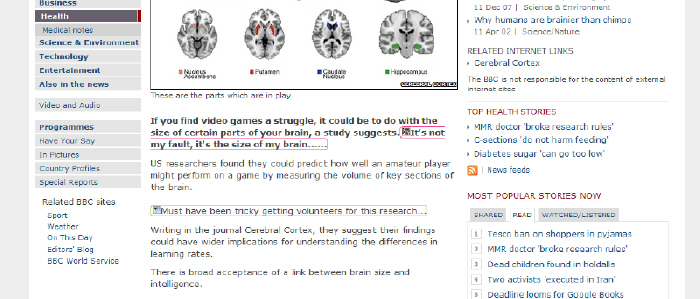Two Irish brothers, one an investment finance researcher and the other a software engineer, have developed a novel user content tool that will allow internet users all over the world to create a personalised web they can share with friends.
YayTrail is the brainchild of Peter Kehoe, a software engineer who previously researched text-in-video processing at DCU and Thomas Kehoe, an investment research manager based in London.
YayTrail allows you to click-and-type to edit any webpage inline, and create a personalised web that is shareable with friends.
Peter Kehoe describes YayTrail as being like a personal media enhancement tool – inline, in-context blogging if you will.
“We are trying to give a lot more control to users in how they create content on the web, for example, if you are a user who wants to make a blog and a Twitter feed but in your own context.
“What we wanted to do was create something that allows the user to contribute a website inline. Out-of-line would be like a Google Side Wiki which is content that sits on a side bar or as a layer on top of a page. But with YayTrail the content is inside the structure of the page. You can add a native element to the page.
“There’s no reason in our mind why a user can’t enhance the online media they consume and share it with their friends. A lot of restrictions in the offline world shouldn’t apply online.
“Take the letters page of a newspaper in the online context – it hasn’t changed much from the traditional format. But, imagine if a user has an opinion they want to share with their friends and wants a more powerful voice, you can enhance the experience with notes, blogs, tweets or wikis and share it with friends.”

YayTrail’s technology doesn’t work with Flash or PDFs but is designed to work with HTML.
“The idea occurred to me because, as a software engineer, when I look at web pages giving instructions to use some tool or other information, usually it is out of date or hasn’t been updated in a while. I thought wouldn’t it be great to be able to edit the page and update the information in it.
“Most web pages don’t have an avenue for user participation and are closed to any kind of user enhancement.
“I thought wouldn’t it be great to give the users the power and give them something similar to the newspapers in the Harry Potter movies. My friends would be able to see my enhancements or point of view on a web page or article and interact with me.”
Kehoe explained that the enhancements would not affect the integrity of any web page or media site. “Just like with Twitter, the user subscribes to the people they want to follow. If I haven’t subscribed to someone I won’t be able to see what changes they’ve made to web pages. You only see the voices you want to hear.”
At the moment, YayTrail is run between Dublin and London. “We’re trying to show the benefit of this technology for the casual everyday benefit of users of the web and not just academics and journalists. The casual everyman audience,” Kehoe concludes.
By John Kennedy
Photos: YayTrail lets a user click-and-type to edit any webpage inline, and create a personalised web that can be shared with others